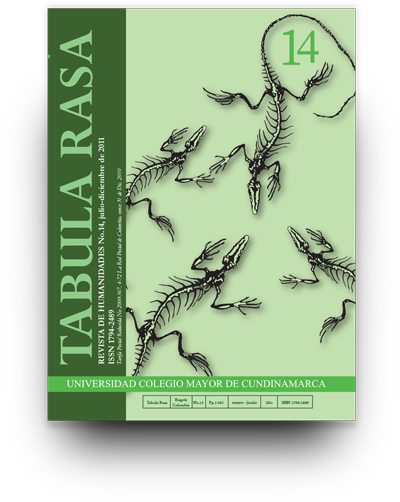From sorceress to saint: Joan of Arc’s heroic piety
De hechicera a santa: la piedad heroica de Juana de Arco
Show authors biography
This paper discusses Joan of Arc’s figure as a hero. In order to do that, we examine the judicial proceedings that led to her sentence to death. We intend to define whether gender determined the way she embodied heroism. We argue her travestism was one of the main causes to her condemnation, because of the transgression it meant against both the Church rules and the stern regulations based on gender binarism. Joan of Arc occupies a symbolic and social place of exception, as there was not at the historic time a conceptual space simbolizing a male position for women. María Zambrano’s analyses on Antigona are followed to show Joan of Arc’s position within the lineage of “dead maids”. Finally, we suggest Joan of Arc expresses an ethics of piety from that place of exception in citizenship.
Article visits 151 | PDF visits 78
Downloads
Butler, Judith. [1993] 2002. Cuerpos que importan. Sobre los límites materiales y discursivos del «sexo». Buenos Airés: Paidós.
Butler, Judith. [2009] 2010. Marcos de guerra. Las vidas lloradas. Barcelona: Paidós.
Dekker & Van de Pol. 2006. La doncella quiso ser marinero. Travestismo femenino en Europa (siglos XVII-XVIII). Madrid: Siglo XXI.
Del LaGrace, Volcano & Judith Halberstam. 2000. Sublime Mutations. Berlin: Konkursbuch Verlag.
Del LaGrace, Volcano & Judith Halberstam. 1999. The Drag King book. London: Serpent’s Tail.
Duby, Georges y Andrée. 1973. Los procesos de Juana de Arco. Granada: Universidad de Granada.
Halberstam, Judith. 1997. Masculinidad femenina. Madrid: Egales.
Haraway, Donna. 1991. Ciencia, cyborgs y mujeres. La reinvención de la naturaleza. Madrid:
Cátedra.
Márquez de la plata y Vicenta Mª Ferrándiz. 2008. Mujeres pensadoras. Místicas, científicas y heterodoxas. Madrid: Castalia.
Sackville-West, Vita. [1936] 2003. Juana de Arco. Madrid: Siruela.
Savater, Fernando. 1982. La tarea del héroe (Elementos para una ética trágica). Madrid: Taurus.
Twain, Mark. 1896. Personal Recollections of Joan of Arc. San Francisco: Harper and Brothers
Vázquez Chamorro, Germán. 2004. Mujeres piratas. Madrid: Algaba.
Vázquez García, Francisco y Richard Cleminson. 2010. “Subjectivities in transition: gender and sexual identities in cases of ‘sex change’ and ‘hermaphroditism’ in Spain, c. 1500–1800”. Hist. Sci., xlviii: 1-38
Zambrano, María. 1987. «La doncella y el hombre. La pérdida de España», en Edison Simons y Juan Blázquez Sueños y procesos de Lucrecia de León. 11-19. Madrid: Tecnos.
Zambrano, María. 1986. «El personaje autor: Antígona». En El sueño creador, pp. 87-94.
Zambrano, María. 1967. La tumba de Antígona. México: Siglo XXI.
Zambrano, María. 1948. «Delirio de Antígona». Orígenes, nº 18.
Zambrano, María. 1945. «Eloísa o la existencia de la mujer». Sur. 124. Anthropos, marzoabril, pp. 79-87.




